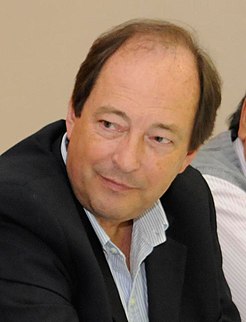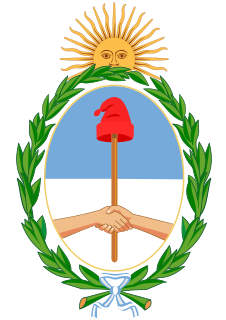Background


The domestic and international esteem President Raúl Alfonsín earned for advancing the Trial of the Juntas suffered in December 1986, when on his initiative, Congress passed the Full Stop Law, which limited the civil trials against roughly 300 officers implicated in the 1976-79 Dirty War against dissidents to those indicted within 60 days of the law's passage, a tall order given the reluctance of many victims and witnesses to testify. These concessions did not placate hard-liners in the Argentine military who, though in a minority, put Argentina's hard-earned Democracy at risk in April 1987, when a group identified as Carapintadas ("painted faces," from their use of camouflage paint) loyal to Army Major Aldo Rico staged a mutiny of the important Army training base of Campo de Mayo during the Easter weekend. Negotiating in person with the rebels after four days of national suspense, Alfonsín secured their surrender, memorably announcing that "the house is in order." [3]

Raúl Ricardo Alfonsín Foulkes was an Argentine lawyer and statesman who served as the President of Argentina from 10 December 1983 to 8 July 1989. Alfonsín was the first democratically elected president after more than seven years of military dictatorship and is considered the "father of modern democracy in Argentina". Born in Chascomús, Buenos Aires Province, he began his studies of law at the National University of La Plata and was a graduate of the University of Buenos Aires. He was affiliated with the Radical Civic Union (UCR), joining the faction of Ricardo Balbín after the party split.

The Trial of the Juntas was the judicial trial of the members of the de facto military government that ruled Argentina during the dictatorship of the Proceso de Reorganización Nacional, which lasted from 1976 to 1983.
The Dirty War is the name used by the military junta or civic-military dictatorship of Argentina for the period of United States-backed state terrorism in Argentina from 1974 to 1983 as a part of Operation Condor, during which military and security forces and right-wing death squads in the form of the Argentine Anticommunist Alliance hunted down any political dissidents and anyone believed to be associated with socialism, left-wing Peronism or the Montoneros movement.
The goodwill this earned Alfonsín and his centrist Radical Civic Union (UCR) began to erode when in June, Congress passed Alfonsín's Law of Due Obedience, granting immunity to officers implicated in crimes against humanity on the basis of "due obedience." This law, condemned by Amnesty International, among others, effectively halted most remaining prosecutions of Dirty War criminals. [3]
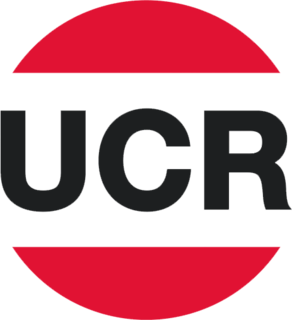
The Radical Civic Union is a centrist social-liberal political party in Argentina. The party has been ideologically heterogeneous, ranging from classical liberalism to social democracy. The UCR is a member of the Socialist International.
The Law of Due Obedience was a law passed by the National Congress of Argentina after the end of the military dictatorship of the Proceso de Reorganización Nacional. Formally, this law is referred to by number, like all others in Argentine legislation, but Ley de Obediencia Debida is the only designation in common use, even in official speeches.
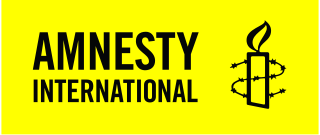
Amnesty International is a London-based non-governmental organization focused on human rights. The organization says it has more than seven million members and supporters around the world.
The economy, too, became increasingly challenging. The 1985 Austral Plan had helped lead to a recovery in 1986; but frequent wage freezes ordered by the Economy Minister, Juan Sourrouille, kept real wages from rising, and GDP remained below its 1980 peak, in any case. A sharp fall in global commodity prices had evaporated the nation's US$4 billion trade surplus by 1987, and foreign debt interest payments could only be financed with more public debt, helping lead to a sudden halving of the value of the Argentine austral after May. Inflation (4% a month in May) rose to 14% in August, and though GDP grew modestly, real wages slid by around 8%. [4] [5]

The Latin American debt crisis was a financial crisis that originated in the early 1980s, often known as "La Década Perdida ", when Latin American countries reached a point where their foreign debt exceeded their earning power, and they were not able to repay it.
The following table contains the monthly historical exchange rate of the different currencies of Argentina, expressed in Argentine currency units per United States dollar. The exchange rate at the end of each month is expressed in:
The austral was the currency of Argentina between June 15, 1985 and December 31, 1991. It was subdivided into 100 centavos. The symbol was an uppercase A with an extra horizontal line, code point U+20B3
Election night, September 6, dealt Alfonsín's UCR its sharpest blow among the nation's governors. The UCR lost 5 of its 7 governors elected in 1983, including the nation's most important: Governor Alejandro Armendáriz of the Province of Buenos Aires (home to 38% of Argentines). Armendáriz had been a key supporter of the President's Project Patagonia, which envisaged the transfer of the nation's capital from Buenos Aires to Viedma for the sake of decentralization. The project, which had been passed by the Lower House of Congress and had even received Pope John Paul II's personal blessing during an April 1987 state visit, had no future without an absolute UCR majority in the Lower House (the Senate - not in play in 1987 - was dominated by the Justicialist Party). [3]
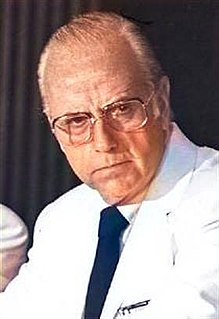
Alejandro Armendáriz was an Argentine physician and politician.

Buenos Aires is the capital and largest city of Argentina. The city is located on the western shore of the estuary of the Río de la Plata, on the South American continent's southeastern coast. "Buenos Aires" can be translated as "fair winds" or "good airs", but the former was the meaning intended by the founders in the 16th century, by the use of the original name "Real de Nuestra Señora Santa María del Buen Ayre". The Greater Buenos Aires conurbation, which also includes several Buenos Aires Province districts, constitutes the fourth-most populous metropolitan area in the Americas, with a population of around 15.6 million.
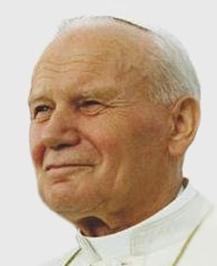
Pope John Paul II was visible head of the Catholic Church and sovereign of the Vatican City State from 1978 to 2005.
The loss of 13 UCR Congressmen benefited smaller, issue-oriented parties more than it did the Justicialists (whose gains were primarily among the governors, going from 12 to 17). The first to benefit in Congress was the conservative Union of the Democratic Centre (UCeDé), which ran on a free market platform calling for privatizations of an array of State enterprises, responsible for nearly half the nation's goods and services. These companies' losses, led by the Argentine Railways', were blamed by the UCeDé's leader, Alvaro Alsogaray, for the public sector cash flow problem and resulting financial instability (while disregarding the role of foreign debt interest payments). The UCeDé's gain of 4 Congressmen in these elections, though menial, portended the policy of "surgery without anesthetic" adopted by national policy makers in the 1990s.
Liberal conservatism is a political ideology combining conservative policies with liberal stances, especially on economic, social and ethical issues, or a brand of political conservatism strongly influenced by liberalism.
The Union of the Democratic Centre is a centre-right conservative and economically liberal political party in Argentina. It was founded in 1982 by Álvaro Alsogaray who unsuccessfully stood for the Party in the 1983 and 1989 presidential elections, and represented the conservative elite, technocrats, as well as classical liberals. By 1989, the UceDé had emerged as the third political force nationwide, after the traditional major parties.
In economics, a free market is a system in which the prices for goods and services are determined by the open market and by consumers. In a free market the laws and forces of supply and demand are free from any intervention by a government, or by other authority. Proponents of the concept of free market contrast it with a regulated market, in which a government intervenes in supply and demand through various methods — such as tariffs — used to restrict trade and to protect the local economy. In an idealized free-market economy, prices for goods and services are set freely by the forces of supply and demand and are allowed to reach their point of equilibrium without intervention by government policy.







